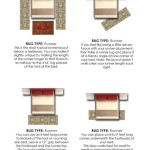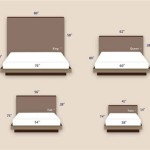Comparing Bed Sizes: Twin, Full, Queen, and King
Choosing the right bed size can significantly impact your sleep quality, comfort, and overall bedroom aesthetic. The bed is a central piece of furniture in any bedroom, so understanding the differences between the various bed sizes is crucial. This article provides a comprehensive guide to four common bed sizes: twin, full, queen, and king. Each size offers distinct advantages and disadvantages, catering to specific needs and preferences.
Twin Beds: Ideal for Smaller Spaces and Sharing
The smallest standard bed size, a twin bed, measures 39 inches wide by 75 inches long. It's often chosen for children's bedrooms, guest rooms, or as a space-saving option in smaller apartments. Twin beds are also popular in bunk beds, allowing for maximum space utilization in shared bedrooms. The compact size of a twin bed makes maneuvering around it easy, making it suitable for smaller spaces. However, the limited width might not provide sufficient space for comfortable sleeping for adults or couples.
Full Beds: A Step Up in Size for Comfortable Sleeping
A full bed, also known as a double bed, measures 54 inches wide by 75 inches long. It offers a significant increase in space compared to a twin, providing more room for movement and sleeping comfortably. Full beds are often considered ideal for individuals or couples who prefer a little more space but don't have the room for a queen or king. The larger surface area of a full bed compared to a twin can enhance sleep quality by reducing the feeling of confinement. However, it's still not the most spacious option for couples, and maneuvering around the bed can be slightly challenging.
Queen Beds: The Most Popular Choice for Couples
The queen bed size, measuring 60 inches wide by 80 inches long, is the most popular choice for couples. It provides ample space for comfortable sleeping for two people, allowing for more freedom of movement. Queen beds are frequently found in master bedrooms, offering a balance between ample space and a manageable footprint. The wider surface area also allows for extra space for pillows, blankets, and even a bedside table. However, queen beds can be a bit large for smaller bedrooms, and maneuvering around them can be slightly more challenging than with a full bed.
King Beds: The Ultimate in Luxury and Space
The king-size bed is the largest standard bed size, measuring 76 inches wide by 80 inches long. It offers the ultimate in luxury and space, providing ample room for two people to sleep comfortably without bumping into each other. King beds are perfect for couples who value spaciousness and need extra space for sleep accessories. The width of a king bed allows for easy maneuvering and provides ample room for side tables and other bedside essentials. However, king beds require a larger bedroom to fit comfortably, and they might not be practical for smaller spaces.
Choosing the Right Bed Size
When choosing the right bed size, consider factors like your bedroom dimensions, your sleeping habits, and any co-sleeping arrangements. If you have limited space, a twin or full bed might be more suitable. If you prioritize comfort and space, a queen or king bed offers a luxurious experience.

The Ultimate Mattress Size Chart And Bed Dimensions Guide Sleep Advisor

Mattress Sizes 101 Finding Your Perfect Fit

Mattress Sizes Chart And Bed Dimensions Guide Amerisleep

Mattress Sizes And Dimensions Guide Clarity

Bed Comparison Chart This Comes In Handy When Trying To Get Some Sheets Made Awww Yeah Mattress Size Bedroom Diy

King Size Bed Dimensions A Comparison Guide Nectar Sleep

Bed Sizes The And Mattress Size Guide

The Ultimate Guide To Standard Bed Sizes Around World

Mattress Size Chart Bed Dimensions 2024 Guide U S News

Mattress Size Charts Dimensions Guide Advisor
Related Posts







